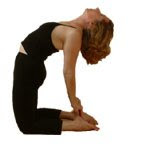It is beautiful to observe someone moving in and out of a fully expressed yoga pose with ease, their breath synchronized with the fluidity of their movement. As a teacher, I have watched many students practice full expressions of poses. I have witness very few students who can move through an entire practice in full expressions of all the poses. When I say full expression of the pose, I am eluding to what we perceive as the perfect pose. But since we are imperfect beings, no one really achieves the perfect pose and it doesn’t matter one little bit. Why you ask? The pose is part of the journey, not the destination.
Yoga aims to integrate the mind, body, and spirit. Traditionally, physical postures and breath work are part of the system of yoga dedicated to helping yogis and yoginis achieve steadiness and relaxation so that they can sit for long periods of time in mediation. If you have ever tried to sit still for 5, 15, or 30 minutes, you know the types of aches, twitches, stiffness, and soreness that can limit one’s time meditating. Keeping active through moving the body with postures and breath work is not only healthy, but it is needed so that we can sit for long periods without getting stiff or tired. You can only attain a level of fitness required for extended periods of sitting by keeping your body moving.
How should we approach postures and breathing? We should learn postures and breathing by letting go and not striving for perfection. This means you must learn how to move within the structure of your own body on any given day and with the rhythm of your own breathing. Variations of postures and the use of props enable you to move within your comfort zone to produce steadiness, release stiffness, reduce stress, renew energy, and connect with your inner strength. Previous injuries, inherited traits, posture habits, previous exercise experience, age, and other factors do affect the current condition of our body and how it functions. Making yoga fit you can lead to a healthy, long-term approach for your yoga practice.
Your breath is your barometer. If you can breathe smoothly and slowly with rhythm through a posture, then you have moved in and out of the posture within your comfort zone. Sometimes, when you are trying to do something new or extending beyond your comfort zone, you may have a tendency to hold your breath during an asana. Pain will cause your breath to be unsteady. Be mindful, back off, and do not hold your breath. Listen to your breath.
Humans are quite capable of changing throughout their lives. Working within your comfort zone, finding a comfortable edge, and then proceeding deeper into poses when your body, mind, and breath are willing, retunes your body to more beneficially use your energy. Using your energy more beneficially conserves your health and can make the most of your potential at any stage of your life. Move and breathe with awareness and focus.
Namaste,
Leslie Ottavi










